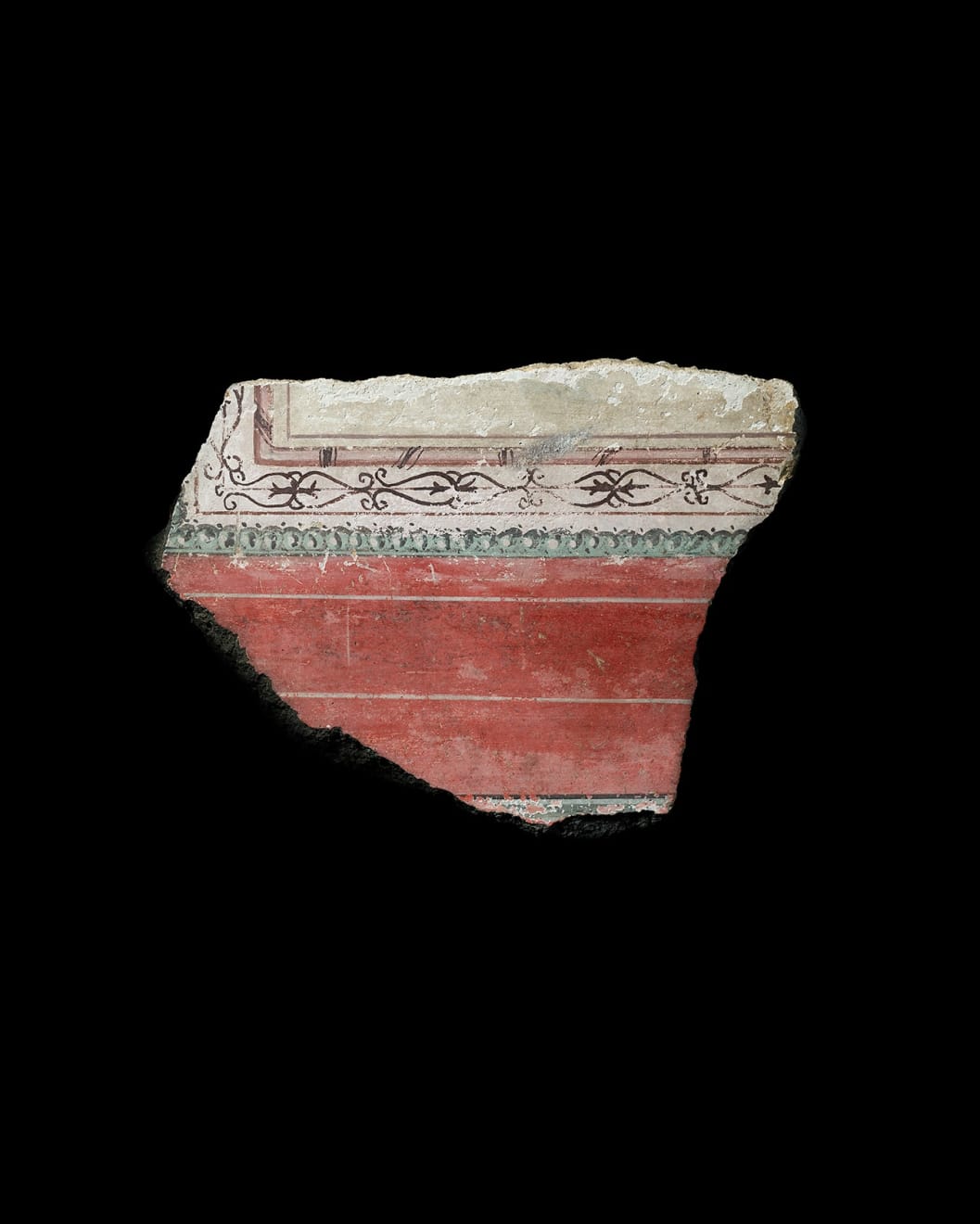Roman
Condition
The paint is very well preserved. There is a repair to the upper right corner with minor infill at the break.
Provenance
Elletson Collection, Parrox Hall, Lancashire, England, acquired in the late 19th century, thence by descentLiterature
Much of what we know about the techniques of Roman wall painting comes from Pliny’s Natural History and Vitruvius’ manual De Architectura. Vitruvius describes the elaborate preparation employed by wall painters to produce a mirror-like sheen on the surface. Preliminary drawings or light incisions were then used to guide the artist in painting the fresh plaster of the walls with bold primary colours. Softer, pastel colours were often added on dry plaster in a subsequent phase. Vitruvius also explains the pigments used. Red was derived either from cinnabar, red ochre, or from heating white lead. For further discussion, see R. Ling, Roman Painting, Cambridge, 1991.
The third style of Roman fresco painting, Ornamental, dates from 20 BC to 20 AD. In it, there is a closing up of space. Illusion is rejected in favour of ornamentation. Largely monochromatic walls were often painted with a few pieces of architecture. For instance, candelabra or slender columns were used to divide the wall into separate sections. These sections then supported smaller, framed paintings, set up in the fashion of an art gallery. The painted frame corner in this example likely surrounded a figural painting.
